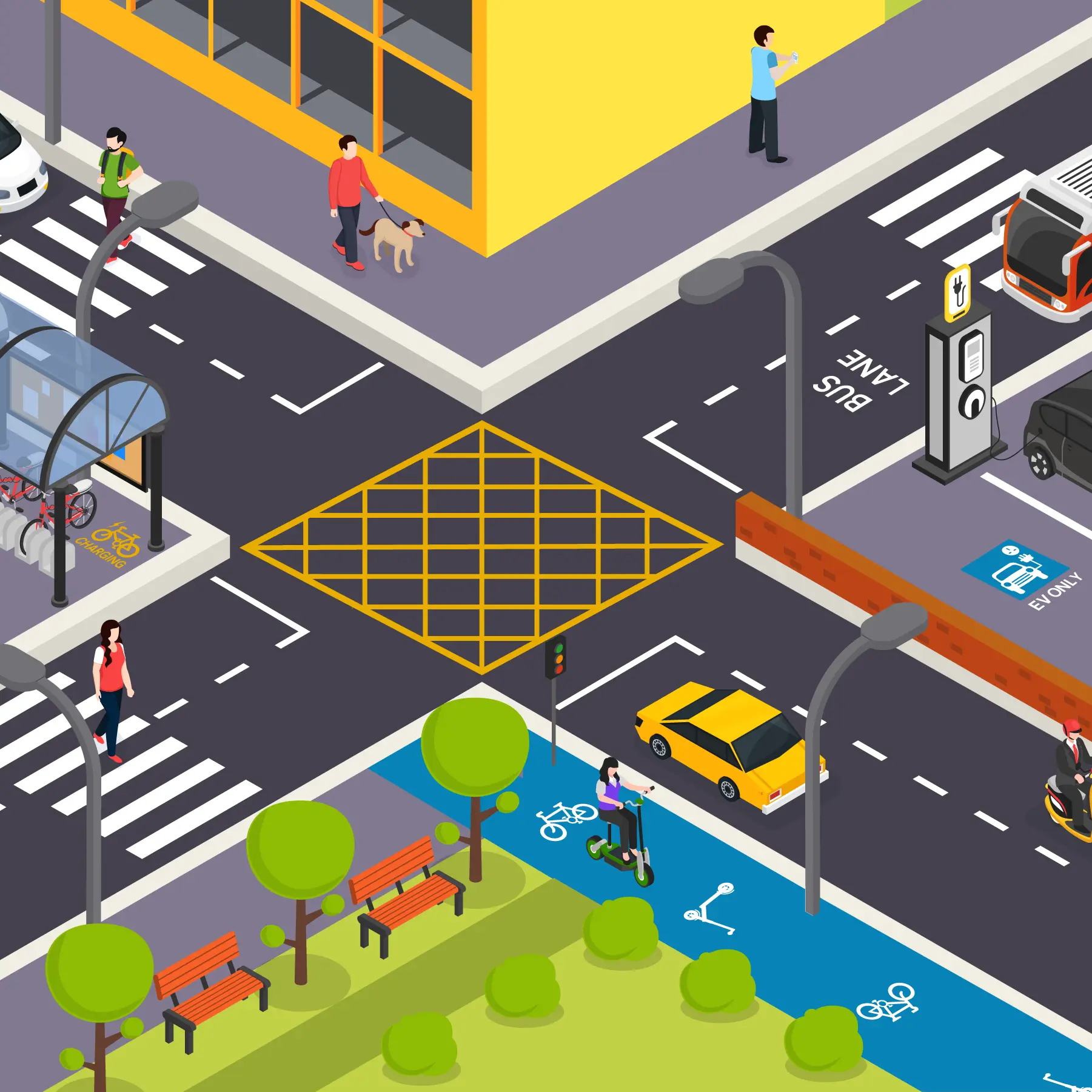A zebra crossing is one of the most recognisable types of pedestrian crossings in the world. Characterised by its alternating white and black stripes, it provides a safe space for pedestrians to cross roads, giving them priority over vehicular traffic in many jurisdictions. These crossings are a vital component of urban traffic management, helping to reduce accidents and improve safety for pedestrians.
For businesses, local councils, and organisations responsible for road safety, preformed thermoplastic markings have become the go-to solution for creating durable, highly visible zebra crossings. In this post, we’ll explore what zebra crossings are, their purpose, and why preformed thermoplastic is the best material for marking them.

The Purpose of Zebra Crossings
Zebra crossings are designed to:
- Improve pedestrian safety: By prioritising pedestrians at designated crossing points, zebra crossings help reduce accidents and encourage safer road use.
- Organise traffic flow: These crossings clearly indicate where drivers must slow down and stop, preventing confusion and ensuring smoother traffic management.
- Enhance visibility: Their bold black-and-white pattern stands out, making it easier for drivers to spot them from a distance, even in busy or dimly lit environments.
Why Preformed Thermoplastic is the Best Choice for Zebra Crossings
Creating a long-lasting and effective zebra crossing requires materials that can withstand heavy traffic, adverse weather, and time. Preformed thermoplastic offers several advantages over traditional road marking paints for this application:
1. Durability
Zebra crossings are often located in high-traffic areas, such as near schools, shopping centres, or busy intersections. Thermoplastic materials are highly resistant to wear and tear, lasting years longer than traditional paint. This durability translates to fewer repairs and reapplications, saving money over time.
2. Quick Installation
Preformed thermoplastic materials are pre-cut and ready to apply, allowing for faster installation compared to traditional road marking methods. They adhere to the road surface through heat application, minimising downtime and disruption to traffic. For local councils or contractors, this means projects can be completed efficiently, with minimal inconvenience to road users.
3. Superior Visibility
The reflective properties of thermoplastic markings enhance their visibility, particularly at night or in poor weather conditions. By embedding glass beads into the material, preformed thermoplastic ensures that zebra crossings remain visible even under challenging lighting conditions, improving safety for pedestrians and drivers alike.
4. Weather Resistance
Unlike paint, which can fade, crack, or peel under extreme temperatures or heavy rain, thermoplastic markings are designed to withstand harsh weather conditions. This makes them ideal for outdoor applications, ensuring that zebra crossings remain clear and effective year-round.
5. Customisation and Standards Compliance
Preformed thermoplastic materials are available in a variety of sizes and patterns, allowing for easy compliance with local regulations and standards. Whether you need a standard zebra crossing design or a custom solution for a unique location, thermoplastic offers the flexibility to meet your needs.
Where Zebra Crossings are Commonly Used
Zebra crossings can be found in a wide variety of locations, including:
- Near schools: Ensuring the safety of children and parents during busy drop-off and pick-up times.
- City centres: Facilitating pedestrian movement in high-traffic urban areas.
- Public transport hubs: Providing safe crossings near train stations, bus stops, or metro entrances.
- Shopping areas: Allowing pedestrians to cross busy roads near malls or markets.
- Residential zones: Improving safety in neighbourhoods with high pedestrian activity.
How Thermoplastic Makes Maintenance Easier
The durability of thermoplastic materials means that zebra crossings require less frequent maintenance compared to painted markings. When touch-ups or replacements are needed, preformed thermoplastic allows for quick and precise reapplication, reducing labour costs and ensuring minimal disruption.
Additionally, the reflective quality of thermoplastic ensures that markings remain effective over time, reducing the need for additional treatments to maintain visibility.
Choosing Preformed Thermoplastic for Your Zebra Crossing
As a thermoplastic markings company, we specialise in providing preformed thermoplastic solutions for zebra crossings and other road markings. Our products are designed to deliver exceptional performance, ensuring that your crossings remain safe, visible, and compliant with regulations.
By choosing preformed thermoplastic, you’re investing in a solution that prioritises:
- Pedestrian safety
- Cost-effectiveness
- Ease of application
- Long-term durability
Whether you’re planning new crossings or upgrading existing ones, preformed thermoplastic is the smart choice for achieving superior results.
Conclusion
Zebra crossings are a crucial part of pedestrian safety infrastructure, and the quality of the materials used to create them can make all the difference. Preformed thermoplastic markings offer unmatched durability, visibility, and efficiency, making them the best choice for zebra crossings in busy urban areas, schools, and beyond.
Contact us today to learn more about how our thermoplastic solutions can enhance your road safety projects.